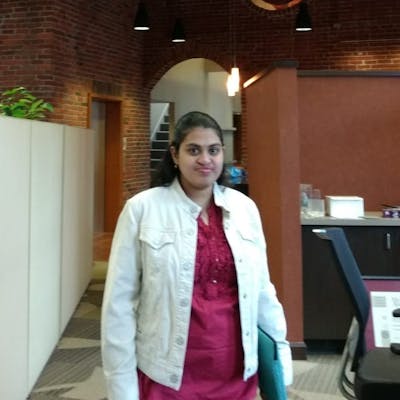Getting Started with Internet of Things (IoT)
Embedded Systems | IoT | Smart Connectivity | Smart Devices
#⚡-2articles1week Challenge
Hello, All.
I'll be sharing all my learnings and knowledge I've gained on Internet of Things in my new series titled "Internet of Things". This article is written as a Task1 for #HashnodeBootcamp and inspired by Sam Julien after an insightful talk on shipping articles faster.
In this article, I'll get you started by giving a short introduction on Internet of Things (IoT).
⬇️Getting Started with IoT
Have you ever got amazed by the technology which sets up your alarm by intaking weather and traffic conditions? Or which gets your coffee prepared even before you wakeup? Are you curious to know about how it works and create one of such technologies for yourself? If your answer is yes to any of the questions above, then you are in perfect place.
Let's plunge into the IoT world.
What's IoT?
Definition - The internet of things (IoT) describes the network of physical objects -"things" that are embedded with sensors, software and other technologies for the purpose of connecting and exchanging data with other devices and systems over the internet.
In simpler terms, IoT is giving life to the devices with the help of internet. IoT-based technologies have become an important phase in changing the way people are leading their lives daily, unknowingly.
History
Let me start by introducing 'Kevin Ashton' who coined the term "The Internet of Things" (IoT) through a presentation he had given to Proctor & Gamble in 1999. He is a co-founder of MIT's Auto-Id Lab, excelled RFID (widely used in bar code detection) for the supply-chain management domain and as well started Zensi, a company which makes monitoring technology and energy sensing.
I'll take you through a quotes presented in RFID Journal on 2009 by Kevin Ashton. It will help you in understanding IoT from its point.
If we had computers that knew everything, there was to know about things—using data they gathered without any help from us—we would be able to track and count everything, and greatly reduce waste, loss and cost. We would know when things needed replacing, repairing or recalling, and whether they were fresh or past their best.
We need to empower computers with their own means of gathering information, so they can see, hear and smell the world for themselves, in all its random glory.
Brief Overview to IoT
IoT can be any device with inbuilt-sensors embedded which attains the ability to collect and transfer data through a network without manual intervention. Thus the object's embedded technology does decision making by the interaction with internal conditions and external environment.
IoT is a huge network of devices connected, all of which gathers and shares data on how it's used and environments through how operations are done. By this, devices learn through the other devices experiences like humans do. It's all about interaction, contribution and collaboration through things.
Let's clarify it with an example:
A developer submits the application with a document containing the standards used, logic implemented, errors & exception handled to tester. Tester does communicate back to developer if raised any issues. It takes several iterations and a smart application is developed.
For example: Your air conditioners can adjust temperatures, water tankers can autofill the tank if it's empty, toaster can be preheated, refrigerator can detect the condition of your food etc.
How did this Happen?
Sensors play a vital role in controlling actions. All they do is, sensors gathers the data and sends it through network, which is now used by other inbuilt sensors embedded in devices and react according to the conditions stated.

Technologies that made IoT possible?
- Access to low cost and lower power technology (High performance and less battery consumption would play a important role in electronic system design)
- Connectivity (Internet connectivity is very much needed and an IP address represents a physical object)
- Cloud computing platforms (IoT devices collects massive real-time data and it needs a proper storage server for it. It's where cloud computing comes into action. This stored data helps in processing, learning and analyzing which gives more space for us to detect where things went wrong within the system like errors/electrical faults)
- Big Data Flux (IoT completely relies on sensors heavily mostly in real-time. As electronics devices are spread across all the fields, it's usage will trigger huge scale of data)
- Machine Learning and Analytics
- Artificial Intelligence
4D's behind IOT
- Decision to Act
- Analyzing the Data
- Storing Data
- Collecting Sensor Data
This is a 4-step D-lifecycle to get a small glimpse of what an IoT does to make it smarter.
Now you know what IoT exactly is. Let's get briefer over time. In our upcoming article, we will be learning the architecture, characteristics and applications of IoT.
I hope you found this article helpful. Drop me your comments, like and do share your valuable opinions, if it did. Also I would be happy to know about what's the first thing that comes to your mind when you think of IoT.
Thanks for reading, I would love to connect with you at Twitter | LinkedIn. 🤝🏻
📖You should definitely check out my other Blogs:
👀References
Thank You Edidiong Asikpo and Catalin's Tech for organizing this bootcamp.
See you in my next article, Take care.

